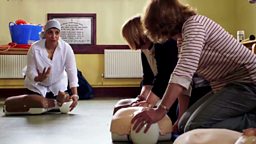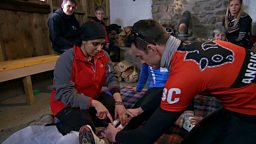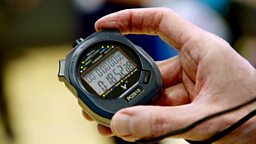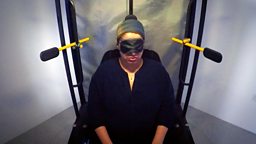What to do if someone is having an asthma attack
Asthma affects nearly 5½ million people in the UK. And although many imagine that it’s a disease which mainly affects children, it’s also a problem for 1 in 12 adults.

Asthma is a condition that affects the airways - the tubes which lead from your nose and mouth into your lungs. In asthma, they become inflamed and constricted and the result is that sufferers find it hard to push the air out of their lungs. This causes shortness of breath, wheezing, and can lead to a life threatening asthma attack.
Most sufferers treat their asthma with a reliever inhaler – this delivers a dose of medicine which they inhale, that relaxes the muscles in the airways and opens them, allowing easier breathing.
They might also take a preventative inhaler – a daily or twice daily steroid spray which works over time to help prevent asthma symptoms by reducing sensitivity, swelling and inflammation in the airways.
If asthma is very bad it can lead to hospitalization. Patients might be administered oxygen or steroids, or in extreme cases adrenalin, which will aid breathing by relaxing the muscles in the airways.
What triggers Asthma?
There are many different triggers for asthma. For most sufferers it is activated by one or more of the following:
- Cold or flu
- Food
- Pollution
- Smoking or second hand smoke
- Alcohol
- Emotions
- Female Hormones
- Mould and Fungi
- Recreational drugs
- Stress and anxiety
- Animals and pets
- Exercise
- House dust mites
- Pollen
- Sex
- Weather
What are the symptoms of an Asthma attack?
Every 10 seconds someone in the UK is having a potentially life-threatening asthma attack.
So what are the warning signs?
- The sufferer’s reliever inhaler isn’t helping.
- Their symptoms are getting worse (cough, breathlessness, wheeze or tight chest)
- They’re too breathless or it’s difficult to speak, eat or sleep
- Their breathing is getting faster and they feel like they can't breathe in properly
What should I do if I see someone having an Asthma attack?
- Sit them up straight – don’t let them lie down. Try to keep calm.
- Get the person to take one puff of their reliever inhaler (usually blue) every 30-60 seconds, up to a maximum of 10 puffs.
- If they feel worse at any point while using the inhaler or if they don’t feel better after 10 puffs, call 999 for an ambulance.
- If the ambulance is taking longer than 15 minutes repeat step 2.
- If the sufferers heart stops beating, then you need to administer CPR until the ambulance arrives.
-
![]()
Dr Saleyha Ahsan demonstrates how to do CPR and use a defibrillator.






















































